The thermostat, located in the housing and locked with a lid, contributes to the acceleration of engine warm-up, mechanical maintenance of its thermal order within the specified limits, and adjusts the amount of fluid passing through the cooling system radiator. Inside the thermostat there is a metal cylinder with a heat-sensitive filler (wax). The balloon is hermetically sealed with a rubber insert. When heated, the filler melts and increases its size, squeezing the insert. The rubber insert is deformed, while the membrane bends and moves the rod that coordinates the thermostat valve.
On a cold engine, the thermostat valve is closed and closes the thermostat cover pipe leading to the radiator of the cooling system.
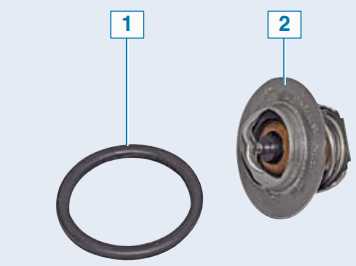
Renault Duster car thermostat: 1 - sealing ring; 2 - thermostat
In this case, each liquid enters the heater radiator through the thermostat base, bypassing the cooling system radiator, and returns to the pump - a small circulation circle. Through the heater core and the heat exchanger (power unit 2.0), the liquid passes continuously and does not depend on the state of the thermostat valve. As the engine warms up, at a fluid temperature of about 89 ° C, the thermostat valve begins to move, passing fluid flow into the radiator of the cooling system. At a temperature of 95 ± 2 ° C, the thermostat valve is completely unlocked, and the liquid is supplied to the radiator of the cooling system, where it gives off heat to the surrounding air. The movement of fluid through the engine cooling jacket and the cooling system radiator forms a large circulation circle. There is a fitting on the outlet hose of the heater radiator, and on the thermostat housing there is a threaded plug for venting air from the cooling system when it is filled with liquid. The fitting on the hose is closed with a cap. On the 2.0 engine, by means of 2 pipelines connected to the nozzles of a plastic splitter (which also connects the filling pipeline, the radiator outlet pipeline and the liquid supply pipeline to the pump pipe), the circulation of liquid through the engine heat exchanger is guaranteed.
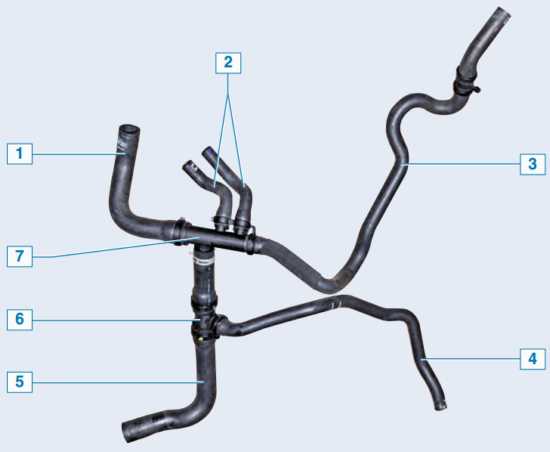
Connection of pipelines of the engine cooling system 2.0 of a Renault Duster car: 1 - pipeline of the inlet pipe of the coolant pump; 2 - pipelines of the heat exchanger; 3 - outlet pipeline of the heater radiator; 4 - filling pipeline of the expansion tank; 5 - outlet pipeline of the radiator; 6 - tee; 7 - splitter
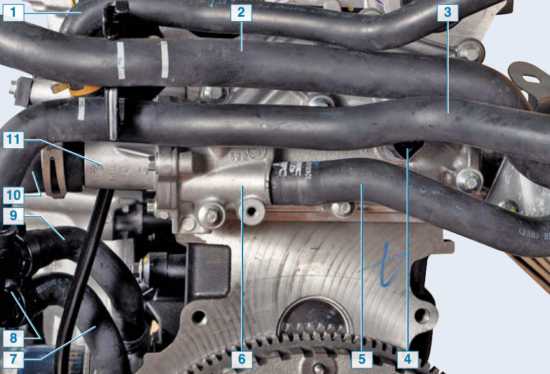
Details of the engine cooling system 2.0 of a Renault Duster car (view of the engine from the left side in the direction of the car, for clarity it is shown on the dismantled engine): 1 - steam outlet pipeline; 2 - outlet pipeline of the heater radiator; 3 - filling pipeline; 4 - coolant temperature sensor; 5 - supply pipeline of the heater radiator; 6 - thermostat base; 7 - outlet pipeline of the heat exchanger; 8 - splitter; 9 - supply pipeline of the heat exchanger; 10 - radiator supply pipeline; 11 - thermostat cover
Fitting (for bleeding air from the cooling system) on the outlet hose of the heater radiator
Plug on the thermostat housing for bleeding air from the cooling system (for clarity, it is shown on a dismantled engine)
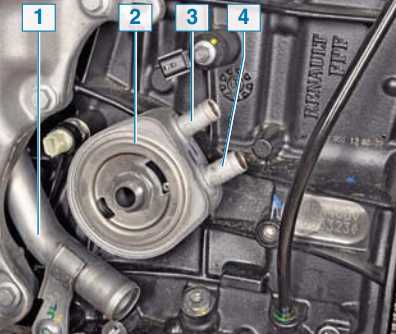
Details of the 2.0 engine cooling system located on the front wall of the Renault Duster cylinder block (oil filter element removed): 1 - coolant pump inlet pipe; 2 - heat exchanger; 3 - fluid supply pipe; 4 - liquid outlet pipe
The radiator of the cooling system is attached to the fan casing. The radiator consists of 2 vertically placed plastic
tanks connected by aluminum tubes with cooling plates.

Renault Duster car cooling system radiator: 1 - left tank; 2 - attachment points of the right tank to the fan casing; 3 - right tank; 4 - radiator inlet pipe; 5 - radiator outlet pipe; 6 - attachment points of the left tank to the fan casing
The liquid is supplied to the radiator through the upper pipe in the right tank, and is discharged through the lower pipe in the left tank. The radiator does not have a drain hole. The electric fan is located in a casing, which is attached from above to the upper cross member of the radiator frame, and from below to the front suspension subframe. As the coolant temperature rises, the fan starts at the command of the engine's electronic control unit (ECU) via a relay.
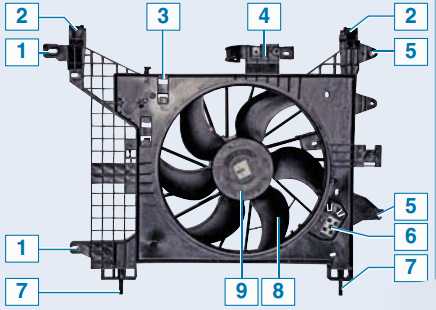
Radiator fan with cover assembly for Renault Duster car: 1 - holes for fastening the right radiator tank; 2 - bracket for external fastening of the casing; 3 - casing; 4 - clamp for fastening the power steering tank; 5 - holes for mounting the left radiator tank; 6 - additional resistor; 7 - finger of the lower support of the casing; 8 - impeller; 9 - motor shaft
An additional resistor is placed on the fan casing. When the coolant temperature reaches 99 ° C, the ECU turns on the fan motor through an additional resistor, and the fan scrolls at low speed. When the fluid temperature drops to 96°C, the fan will turn off. When the coolant temperature reaches 102 ° C, the ECU turns on the electric motor, bypassing the resistor, and the fan scrolls at high speed. If the coolant temperature exceeds 118 °C, the engine overheat warning light will come on in the instrument cluster. The coolant temperature sensor is screwed into the threaded hole in the thermostat base (see "Removing the coolant temperature sensor of a Renault Duster car"). The sensor provides information to the temperature indicator in the instrument cluster,
Coolant temperature sensor.
Source: http://avtorial.ru/Renault/Renault_Duster-53.html
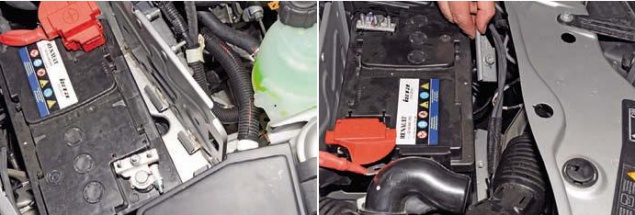
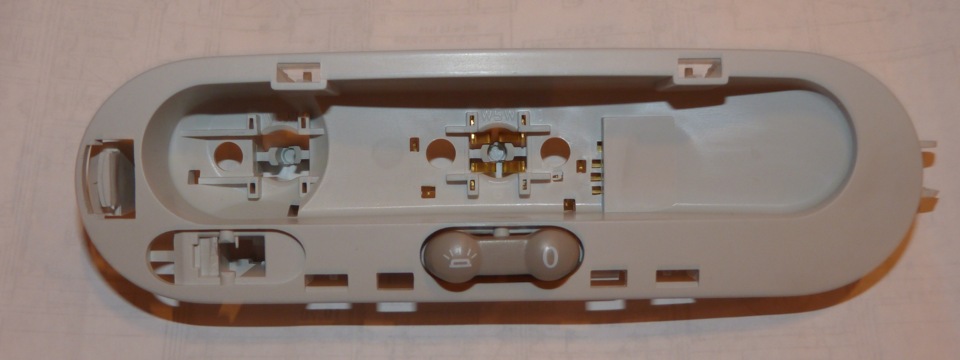
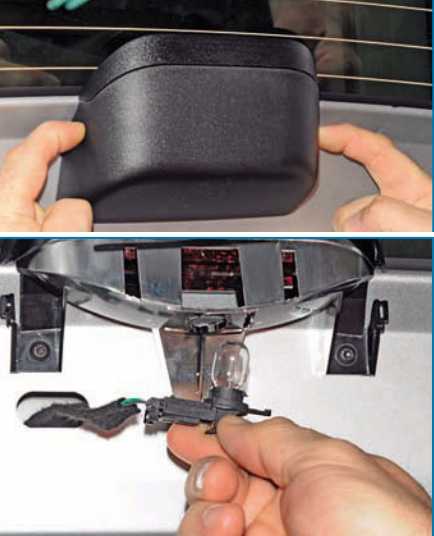
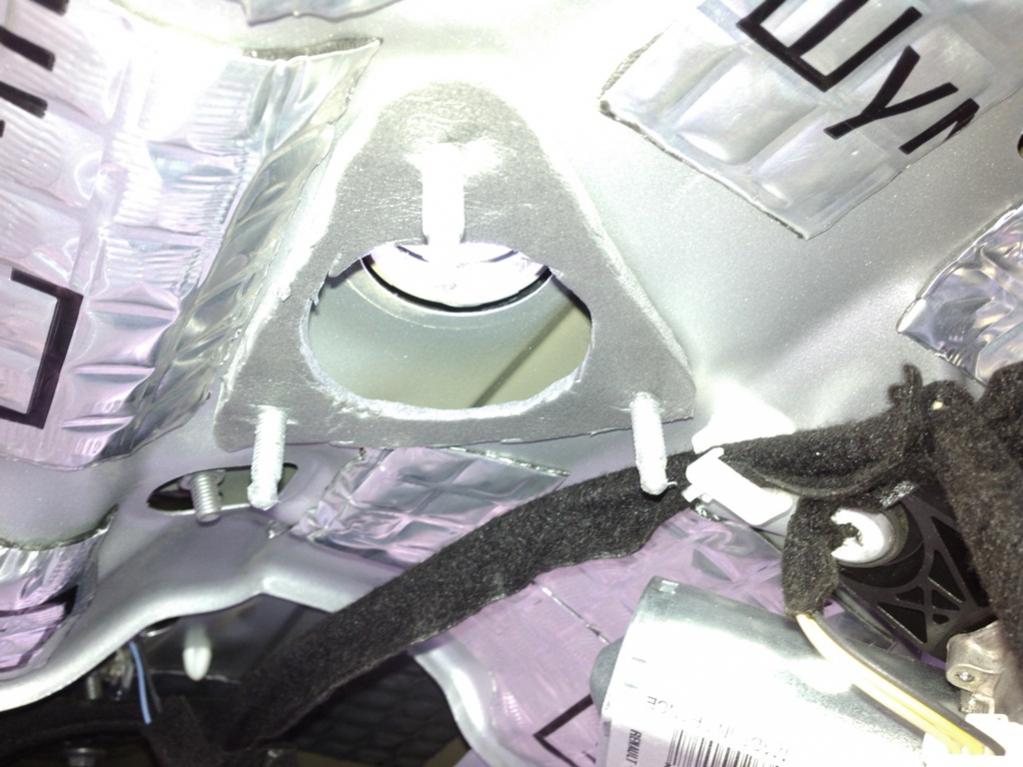
![1 generation [2010 - 2015]](/uploads/Renault_Duster_2010-2015_.jpg)
